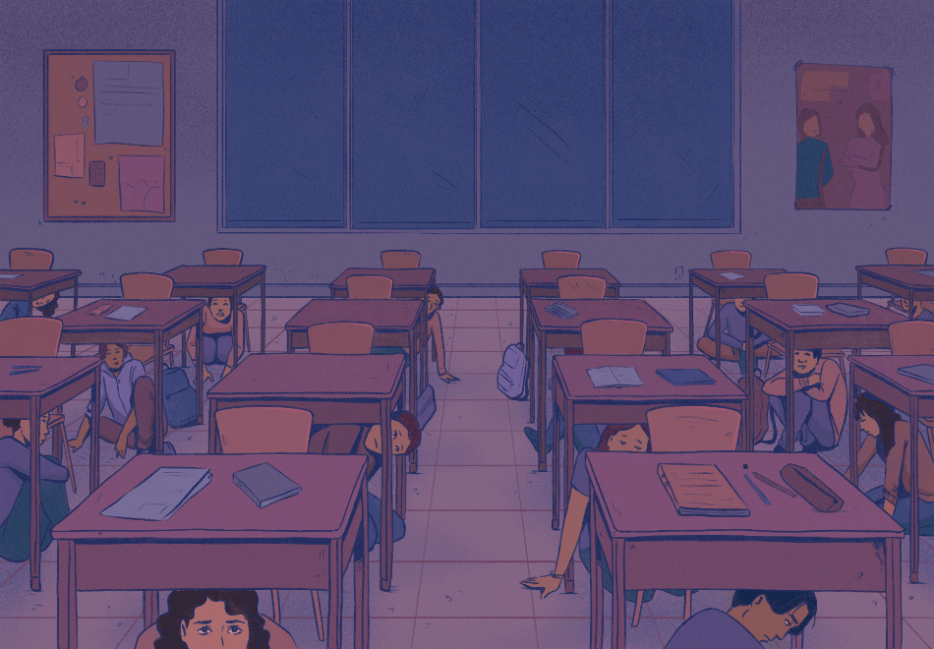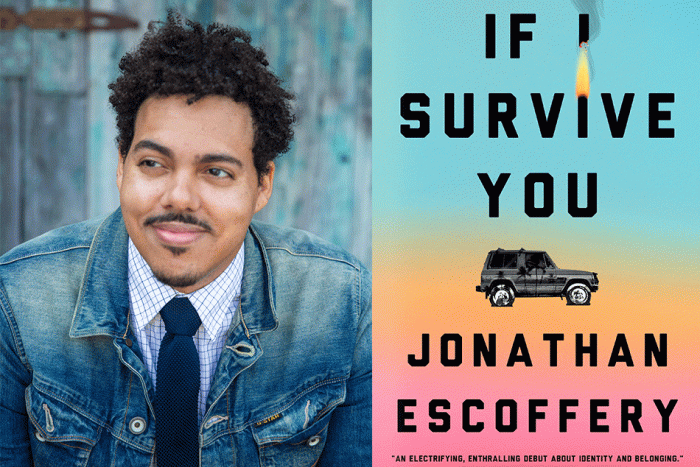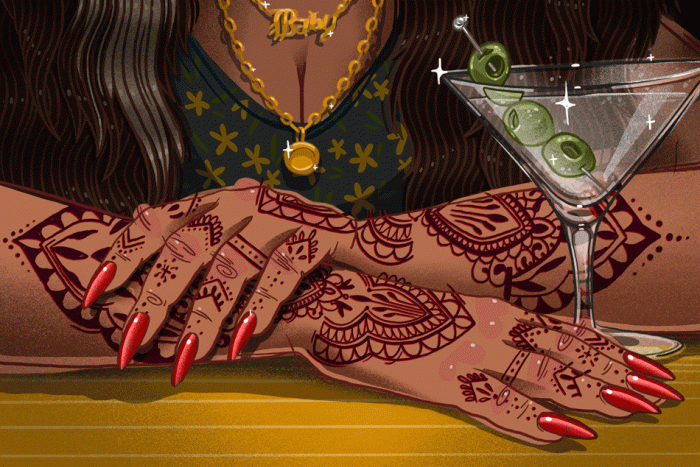By the time I heard the shots, it was over.
Of course, I didn’t know that when I heard them: the distinct pop-pop that isn’t fireworks, isn’t a car backfiring, isn’t anything else you’d hope it to be.
My hand instinctively flew to cover my swollen belly, as though my slender fingers could protect what was inside.
For a moment, I just stood there, hand on belly, listening with an animal alertness as the students in my 10th grade English class kept talking, seemingly too engaged with their group activity to have heard the sound. Outside the classroom, I heard distant shouts, then silence.
My mind did a thousand small mathematics in that moment: Was the sound really what I thought it was? Was it coming from inside or outside the school campus? Should I leap into active-shooter mode, or wait for a PA announcement?
Was this really it? The moment every teacher, student, and parent in the United States has worried about, pictured in their minds, and then tried to rationalize away? “Not here, not this school.” Until it is. Maybe now, at Esteban Torres High School in East Los Angeles on a dim November morning in 2019, it was our turn.
My co-teacher Kareem* and I exchanged covert, worried glances that confirmed each other’s suspicions. Then briskly, wordlessly, our bodies clicked into action. I lowered and closed the blinds while Kareem locked the classroom door and covered its window in paper—what we’d been trained to do in all of our many drills and actual lockdowns.
Calm, collected, in control, I told myself as I moved.
Classroom secured, Kareem and I briefly debated the best course of action without naming what might be happening.
“Should we…” get the kids down under their desks?
“Maybe wait? I don’t want to…” overreact and traumatize them unnecessarily.
“There wasn’t a—” drill “—planned, was there?”
I shook my head.
“Ms.,” Miguel called out buoyantly, waving his worksheet in the air. “Come tell Alex his evidence is trash.”
Calm, collected, in control, I repeated as I walked over to Miguel’s group.
“So, Alex says he fell down the stairs, right?” Miguel said, pointing to the body depicted in the murder-mystery image the students were debating over. “But like, why would he be laying like that? Wouldn’t he be face-down?”
I pinched my brow, trying to focus on what he was saying while also listening for sounds outside the classroom.
“Nah, man,” Alex interjected. “He coulda twisted hisself when he was falling.”
That’s when the PA cut on. “Attention staff and students, we are going into a lockdown. Teachers, lock all doors and clear any students from the hallways.”
Shit.
Miguel and Alex let out a whoop, excited for the sudden interruption in class work. Concern flashed through several other faces, spines stiffening in tension as they glanced around the room, looking for clues.
But the majority of the students didn’t react at all, so accustomed to the many lockdowns we’d experienced last school year when a neighbouring gang house frequently had spats with the police. The school community was no stranger to gun violence, but school shootings, I’d always rationalized, were something that largely happened in privileged, suburban, white schools—all things Esteban Torres High School wasn’t. During our lockdowns, the danger was always outside of school grounds, more of an “abundance of caution” thing in case the situation escalated.
As such, we never had students shelter under their desks, both the school and district leadership appreciating the harmful psychological impacts such procedures can cause. Usually, we just locked the classroom doors, covered all the windows, and carried on as usual.
This time, though, I interrupted the students’ chatter. I strained to keep my voice even as I said, “Let’s go ahead and get under our desks. Folks in the back rows, come up closer to the front, away from the windows.”
Alarm shot through the classroom.
“Wait, Ms., is this real?”
Calm, collected, in control. “I don’t know,” I said in my steady, I’m-in-charge voice, surprised at how natural it came out sounding. “But let’s do it, just in case.”
Several students ducked quickly under their desks while others hesitated. The more lethargic ones grumbled, smacking their teeth. “It’s dirty down there.” “Come on, Ms.”
“Just get down,” I said, letting my voice get sharp with authority, careful not to allow the genuine fear I felt to come through.
When I scanned the room and saw no heads above the eyeline of the desks, I crouched down below my own desk. It wasn’t easy; at six months pregnant, floors had suddenly become a very long way down.
Everyone settled into place. I did more calculations: We were on the first floor, which was the most accessible to a shooter, but also meant we had two exits, students were able to crawl out of the windows if need be. The classroom abutted the school fence—if the shooter were in the hallway, would it be best to let students climb through the window and scale the chain-link to safety? How well could the classroom door block—
“Pop-pop!” Miguel called out.
Alex snickered while a chorus of girls told him to “Knock it off” and “Cállate.”
“Gentlemen,” I said with enough bite that I didn’t have to say anything else. I knew it was his immature way of dealing with the tension of the moment. Every fall in our dystopia unit, after reading Parable of The Sower, I had the students write their own dystopias. This year, like ones prior, there’d been dozens of school shooting dystopias—including Miguel’s. It always served to remind me that, despite their jokes and numbed normalization, my students carried a deep anxiety about this particularly American phenomenon.
I closed my eyes and briefly, internally, let myself step out of the role of teacher and feel the moment as a human. My heart thudded. Panic moved through my veins and tingled across my skin. Cramped down on the floor, my back started to pang.
I stared down at the hard, scuffed linoleum—mopped once a year and only swept when I wrangled a service student—and felt my vulnerability deep into my bones. I was slow. I couldn’t run fast, or crouch well, couldn’t crawl through the window if I needed to. I couldn’t defend these kids if I needed to. Not that you can do much against a bullet, but I still felt the impulse, the same way I kept my hand firmly over my belly. As if I could really do anything to protect my students or this most precious cargo, exposed and bursting out right at the centre of me.
I rubbed my belly slowly. It’s okay, baby, I thought. We’re going to get through this.
“Ms.,” Xochi whispered. “Can I use my phone?”
I looked up. Usually I enforced a strict no-phone policy in my classes and for a moment, I hesitated at letting that boundary dissolve. Then I looked out at my students’ worried faces, some of which were already illuminated by the glow of their phones, and thought, For Christ’s sake.
“Yes, of course. Text who you need to.”
I pulled out my own phone and started typing a message to my boyfriend. We’re in a lockdown, don’t know what’s going on. I didn’t want to sound alarmist, didn’t want to tell him I’d heard shots.
Before I could hit send, a new message from the staff texting app appeared on a banner at the top of my screen. I clicked. Police-related shooting on campus. No students injured. Scene is secure. Do not let students out of classrooms.
I blinked at the message. It sparked more questions than answers—who did the police shoot and why?—but for those first moments, my mind clung to the one solid fact: we were safe. I felt a wash of relief move through me, panic leaving my fingertips.
The moment was short lived, though, Kareem and I again snapping into teacher mode. “Alright, everything’s okay,” he started saying. “We can come out.”
We crawled stiffly, slowly out from under the desks, all of us dazed from internal places of fear and prayer. “What’s going on, Ms.?” Gabriella asked me.
Still not sure of how much to reveal, I began, “I don’t know for certain. But the message I just got said that everything is secure and no students were—”
“Daaaaaamn!” Miguel called out, leaping up. “That fool got shot!”
I looked over to see him gawking at his phone, tapping other students’ shoulders excitedly as he showed them his screen. A murmur went through the room as more students looked down at their phones.
Kareem walked over to Miguel, glancing at his screen. He let out a long sigh that I translated to mean oh shit. “Okay, come on, put it away.”
It was no use. Gasps and exclamations moved through the room as students stared intently at their screens.
“There’s a picture on Snapchat,” Kareem whispered to me. “Of the body. Looks like it was taken from the Performing Arts building.”
“For fuck’s sake,” I heard myself say, the f-word slipping through my teacher demeanor. Of course there’d be a picture on social media before us teachers knew what was actually going on.
Over the next twenty minutes, the story emerged through text messages and screenshots and social media posts. Students who’d been outside for PE said they saw a guy hop the fence and run across the field, shouting as he waved a knife. Or a machete. No, a sword. An LA County sheriff officer trailed behind the man.
A student who’d been in passing period, or maybe just ditching, had been sitting in the covered lunch area when he saw the man run by, hollering as he swung the sword around. Then there was a shout to, “Get down, get down!” followed by a pop-pop.
And the man dropped, fast as that.
The image sparked something, the blurry, second-hand details rubbing up against a burial site inside me. As the story of the shooting came into focus, flashes of another story burst through my mind: a bullet hole in the TV; a bony, haunted mugshot of my brother-in-law; my sister’s voice on the phone, “Jimmy got into a shoot-out with the police.”
I blinked the thoughts away. “Okay, everyone,” I said, feeling the tension in the room and in myself. “Let’s settle down.”
Neither I nor the students were in a place to learn or process or do anything constructive other than just survive this moment, all of us physically safe but psychologically shaken, and confined to this single classroom. There was no point in trying to finish the lesson—a murder mystery, at that!—but I needed to do something calming that would also allow me a moment to not be fully in charge.
So, I dimmed the lights, logged into my Netflix account, and put on The Office.
Kareem watched over the kids, and I took a seat in the back of the room. As the familiar jingle of the opening song chimed in, comforting and safe, I pulled out my phone and texted my boyfriend. There was a shooting at my school, I wrote. Police here, everyone safe. JIC you heard on the news, didn’t want you to worry. Heart emoji.
I sent the same text to my parents, minus the emoji, then reread the message several times. How quickly I was already moving towards minimizing the incident, the loss of life, the intensity of those ten minutes after I’d heard the shots.
I rubbed my belly and stared out the window, my mind drifting to the image of the man’s body that I’d glimpsed on my students’ phones. When my brother-in-law, Jimmy, had exchanged gunfire with police officers during a methamphetamine-fueled psychotic episode four years ago, only luck and white privilege had allowed him to walk out of the situation alive. He was now serving 44 years in a penitentiary upstate.
Like the man who’d just died on my school campus, my brother-in-law had acted in an insane way, with the potential to hurt and kill. How easily his fate could have been the same as this man’s, now lying face-down on the pavement, strangers ogling over photos on social media. I thought of his family—his mother, sister, perhaps a son or daughter—who were right now getting the call.
I felt my eyes pinch with tears as I breathed in long, slow breaths, stroked my baby bump and thought, It’s okay, baby. It’s okay.
I glanced up to see Miguel hunched over his phone with Alex, looking at another photo. He was laughing.
“Miguel,” I heard myself say. “I want to talk to you.” I used my no-isn’t-an-option tone, and I could tell Miguel heard it, too. He rose slowly and shuffled back to my corner, standing awkwardly as he avoided eye contact.
“Yeah, Ms.?” he asked, sensing he was in trouble.
“Sit down, please.”
He did, and when we met eyes, I let out a long sigh, letting it dissolve the line between teacher me and me.
“Listen, Miguel, what’s going on is super intense, and I know we all have our own ways of dealing with it. But this guy who died—” I gestured to his phone, which he quickly slid into his pocket. “He was someone’s family, you know? Like, someone’s getting that call right now. And I know what he did was crazy and dangerous, but he was still a person. So just, have some respect, okay?”
Miguel hung his head, looking less like a hot-shot tough guy and more like a kid. “Okay, Ms.”
I’d like to end the story there, on a redemptive note in a teachable moment. But in the reality of a campus shooting, the day crept painfully on. The school was now an active crime scene, and the Sheriff’s Department, impervious to the needs of the thousand-plus students, teachers, and staff on campus, ordered everyone to continue to shelter in place.
For two hours, no one was allowed to leave their classrooms. Though I was accustomed to holding my pee throughout the school day, my pregnant bladder began to ache. I was just beginning to resign myself to having to use the dreaded pee bucket, provided to every K–12 classroom in case of situations just like this one (maybe I’d ask the female students to form a little wall around me so I didn’t have to expose my bare ass to a roomful of teenage boys…), when admin got the okay to escort people to use the restroom, one-by-one.
Around 11 am, the kids got hungry and restless. Ours is a low-income school where the majority of students rely on free lunch, it wasn’t like many students had bag lunches waiting in their backpacks. So, I broke into my stash of leftover Halloween candy, and we played a series of classroom games: Four Corners, Heads Up 7-Up, Rock-Paper-Scissors.
Finally, around 1 pm, the school sent a sad lunch of sugary yogurt and waxy apple slices. Shortly after, the Sheriff’s Department allowed us to dismiss students into the care of the line of anxious, waiting parents that snaked around the block.
Since we were legally responsible for students until the end of the school day, though, we couldn’t release students whose parents were working or otherwise unable to come to campus. Those kids had to stay until school was dismissed at 3:30, a full seven hours after they’d entered the classroom for first period. Eventually, most just put their heads down and slept.
When the room was finally empty, I was exhausted, light-headed from the lack of real food and drained from attempts at keeping the kids calm and entertained. I was tense from the stress, from managing student needs, and the depths of vulnerability I’d felt in my pregnant body. All I wanted to do was go home, heat up leftovers, curl up in my boyfriend’s arms, and cry.
But I couldn’t. Because I’m a teacher, and our first priority is never self-care but rather the care of our students. Ten minutes after dismissal, an emergency staff meeting was called to clarify facts and develop a plan to help students process.
I wanted to cry. I wanted to process, to rest, to sort through the complex and conflicting feelings in my mind and my swollen, tender body. I did not want to guide other people through their processing. I cared for my students and wanted to support them as they dealt with the trauma of the day, but how could I do that, when I, myself, felt so unstable? When would I finally get the chance to drop my teacher persona and just be a human—pee and eat and cry and feel?
I wanted nothing more than to call in sick the next day. But I couldn’t do that either. My students needed stability, to see adults they knew and trusted. And I was going on maternity leave soon. Since, as a teacher, I would receive no state disability or FMLA compensation, I was reliant entirely on my sick days to make it through my leave. I couldn’t afford to take the day off.
So, I showed up the next day. As we do as teachers—exhausted and imperfect, but there. I led my students through an awkward, scripted discussion about the day’s event, and they shifted in their seats, and I didn’t at all feel like the calming, in-control adult I needed to be in that moment. I felt messy and inadequate.
But I was there, showing up for my students in whatever diminished capacity I could. We were safe and alive, which is more than you can say for the man who died, or for the kids who died in a school shooting the very next day in nearby Santa Clarita. Or for the students and teachers who’ve lost their lives in some of the 352 school shootings since Columbine, or for those who will, because this keeps happening and keeps happening and keeps happening.
We were safe and alive, which no one, despite what we tell ourselves, can take for granted in this country.
*All names have been changed.






